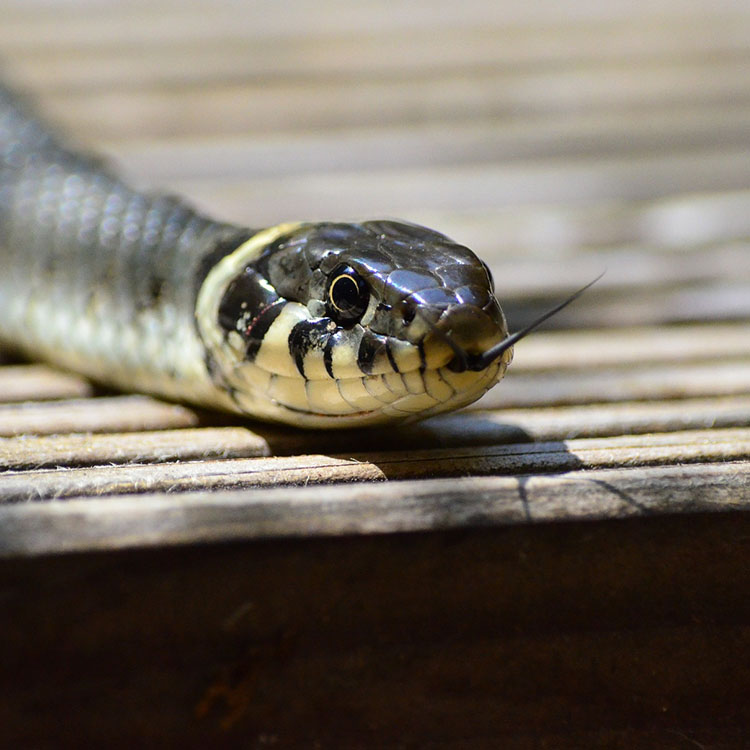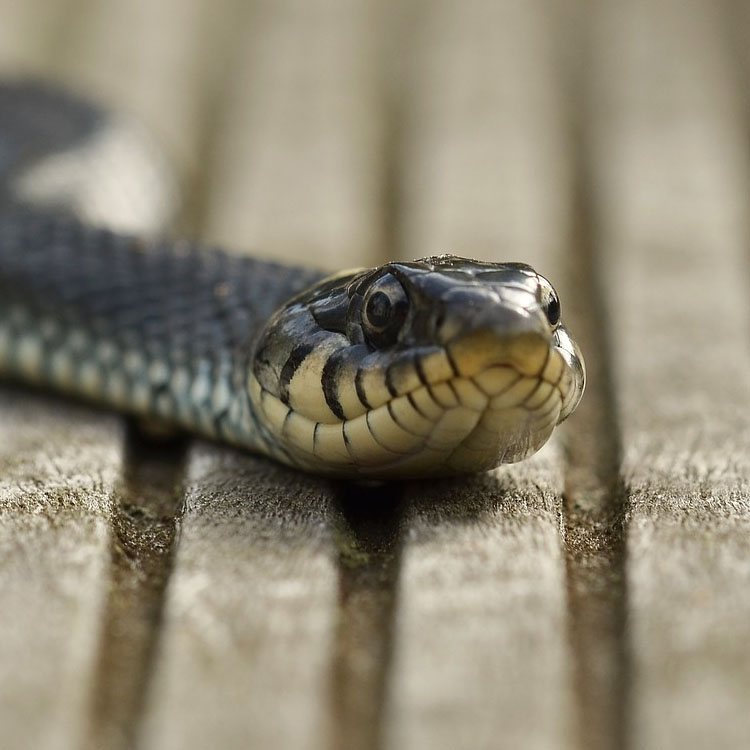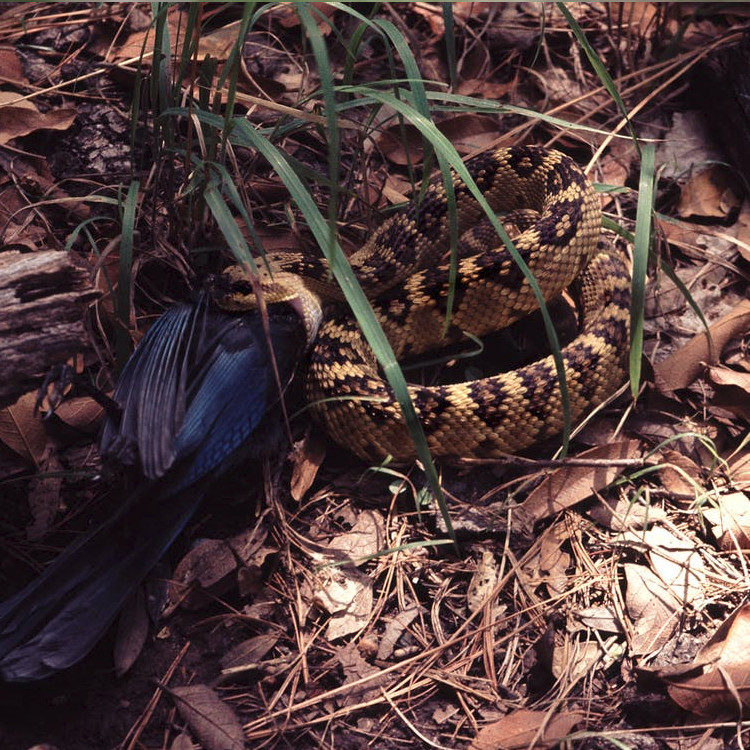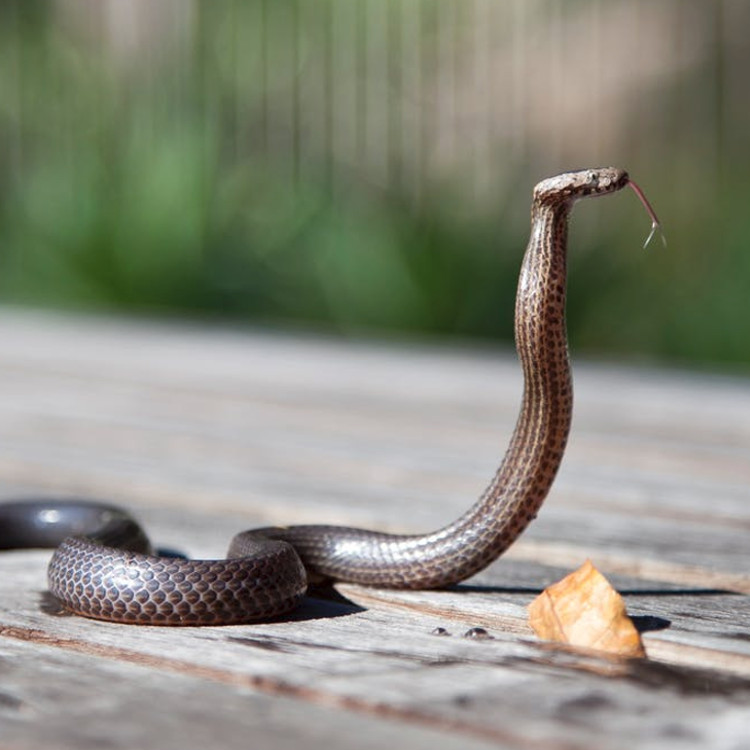Snake Trapping & Removal
In this Article
Snake Inspections
If you routinely find shed snake skin around your property, or spot snakes in your yard, pool, or outdoor living area, you may have cause for concern of a snake infestation in your area. Snakes generally travel and feed alone, but many snakes in one area can cause snakes to seek other sources of food outside of their normal diet. In order to keep yourself and your family safe, you should inspect your property for snakes and make sure that your family knows how to identify a poisonous snake.
Finding Natural Predators of the Snake
A simple solution for snake removal is to allow nature to take its course and let the food chain get rid of that garter snake in your backyard. What kind of animals eat snakes? Predatory birds, for one, and some mammals. I've personally owned two dogs that love to bite garden snakes and black snakes in half for fun. Click the link above to continue reading about this fascinating topic.

Snake Droppings
It is not difficult to identify snake droppings. They range in size and color based on the size of the snake and the species; however, local snake experts will be able to identify the feces based on what snakes appear in your area of the United States. Snake excrement can contain the undigestable parts of their prey, including hair, bones, teeth, and scales.
Snake Bites
Snake safety should be the number one concern if you have one or more snakes inside your home or invading your outdoor living space. Stay as far away as possible from any live snakes you discover on the property, and if possible, barricade the snake in a bathroom or closet until a wildlife professional can come assist you with the snake removal.
While venomous snake bites only yield about 5-6 fatalities each year in the United States, 7-8,000 are treated for venomous snake bites. Educating yourself and your family can help make sure you're in the the former statistic and not the latter. Read more advice about snake bites.

DIY Snake Removal
One thing to keep in mind when you are trying to deal with a snake problem on your own is that unlike wildlife services companies, you don't have access to anti-venom for poisonous snakes, and if you aren't a trained snake removal expert, you may get bitten by a snake. As such, removing snakes on your own can be extremely dangerous and we do not encourage that you do so on your own. However, if you are going to proceed with trapping or catchign a snake on your own, we can show you the methods we use for catching snakes.
Snake Traps and Trapping Equipment
Two types of traps are popular for catching snakes. One should 100% not be used for venomous snakes, and the other used extremely carefully for venomous snakes. In either case, both of these types of traps are extremely humane and allow the operator to release the snake. Keep in mind that local trapping and releasing laws may pertain to snakes, and to be in accordance with these laws, you should consult your local Fish & Game office before trapping snakes. You should also know that simply trapping snakes is not guaranteed to solve your snake problem. In order to keep snakes away you can utilize different exclusion methods, which we will cover later.
Glue Traps
Snake traps that use glue will look like a thin, flat box, and will have both glue pads inside (the trap), as well as chemicals that attract snakes (the bait). This is not the world's safest snake trap and should not be used on venomous snakes except by a trained, licensed, and insured snake expert. Non-venomous snakes can also lash out once you release them from this trap if they feel threatened, so be extremely cautious so as to protect yourself from any bodily harm.
Minnow Traps
Possible the most dangerous type of snake trap ever conceived is the minnow trap. This trap resembles two steel mesh waste baskets joined together at the openings. Trappers generally place eggs or other attractive food inside and watch the snakes enter the minnow trap through holes at the ends of its meshed exterior. Snakes have a difficult time getting out of these and eventually give up trying to escape. These types of traps work well when partially submerged in water, and may be used to remove snakes in the pool. Expert trappers will to open the trap and wrangle snakes individually using snake tongs or other similar tools. We do not recommend the novice snake catcher try this or operate these types of traps.

Snake Repellent
Snake repellent doesn't work in the same manner that bug repellent works, in that it just doesn't work. Old wives' tales say that keeping mothballs in the house will keep snakes from entering, but it's only a half truth. It's true that almost any living creature cannot stand to be in close quarters with the chemical napthalene used in moth balls. If you were to put a snake in an airtight container with several moth balls, the snake would move to the other side. However, the amount of napthalene required to create a toxic environment for any wildlife critter would most likely poison you and your family. Snakes are not as sensitive to this chemical as moths and small insects are, so best save your money for the snake removal expert. They will know how to get rid of snakes quickly, efficiently, and safely.
Killing Snakes
Unlike the pest control professionals that keep roaches, ants, and other household insect pests from your home, most wildlife service professionals, and snake removal specialists in particular, absolutely hate exterminating snakes and other animals. In fact, most wildlife service professionals are conservationists in one way or another and truly respect these creatures that bring terror to humans everywhere. There are also legal concerns regarding the extermination of most nuisance wildlife creatures, and for the letter of law in your local area, consult local Fish and Game officials.
Snake in Your Home
Catching snakes in your home is much more difficult than catching them out in the wild. You may scare a snake into attacking you if you are not trained on how to trap a snake. The snakes in your home will be surrounded by a bevy of unfamiliar smells, and forces it perceives to be hostile or aggressive. More importantly, they won't have the same food or water sources they are accustomed to, and may be in a state of panic.

Snakes in the Basement
If you determine the presence of snakes in the basement, do yourself a favor and exit the area immediately. Basements are extremely difficult places to catch snakes, and you may end up trapped down there if the snake is venomous and blocks your exit path. Trained wildlife service professionals will not only have access to anti-venom if need be, but will also carry the necessary tools to pick up and remove a snake from a distance.
Snakes in the Attic
While you might think there's not much for a snake in the attic of your home, you'd be mistaken. Snakes can be drawn to many types of food, including other wildlife that may nest in your attic. Snakes are adept at finding rats, small mice, and bird eggs in order to fill their stomaches. If you have a snake in the attic, be very careful if you intend to remove it yourself. We do not encourage this, and advise you to use our nationwide directory of animal control and wildlife removal specialists in order to locate a professional near you who can assist you with your snake problem.
